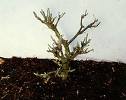Ashleaf Maple Tree Information
Images of Ashleaf Maple:






Ashleaf Maple grows in the following 51 states and provinces:
Alabama, Alberta, Arizona, Arkansas, California, Colorado, Connecticut, Delaware, Florida, Georgia, Idaho, Illinois, Indiana, Iowa, Kansas, Kentucky, Louisiana, Maine, Manitoba, Maryland, Massachusetts, Michigan, Minnesota, Mississippi, Missouri, Montana, Nebraska, Nevada, New Hampshire, New Jersey, New Mexico, New York, North Carolina, North Dakota, Nova Scotia, Ohio, Ontario, Oregon, Pennsylvania, Prince Edward Island, Saskatchewan, South Carolina, South Dakota, Tennessee, Texas, Utah, Virginia, Washington, West Virginia, Wisconsin, WyomingInformation about Ashleaf Maple:
The Acer Negundo is commonly known as the Arce (Spanish), Ash-leaved Maple, Ashleaf Maple, Boxelder, California Boxelder, Fresno De Guajuco (Spanish), Inland Boxelder, Manitoba Maple as well as Western Boxelder.
The fully documented scientific name of boxelder is Acer negundo L. Numerous varieties of this widely distributed species have been designated : Acer negundo var. negundo L. Acer negundo var. interior (Britt.)Sarg. Acer negundo var. violaceum (Kirchn.) Jaeg. Acer negundo var. texanum Pax. Acer negundo var. californicum Sarg. Acer negundo var. arizonicum Sarg. These varieties appear to represent fairly distinct geographic races. Intergradation occurs between varieties and has been considerable between var. violaceum and var. negundo .Boxelder is widespread in riparian and palustrine communities throughout most of the contiguous United States. Its range extends from New Jersey and central New York west through extreme southern Ontario, central Michigan, northern Minnesota, central Manitoba, central Saskatchewan, southern Alberta and central Montana, eastern Wyoming, Utah, and California; and south to southern Texas and central Florida. It is also local in New Hampshire, Vermont, Massachusetts, Connecticut, Idaho, and Nevada. Boxelder has been naturalized in Maine, southern Quebec, New Brunswick, Nova Scotia, Prince Edward Island, and in southeastern Washington and eastern Oregon. Varieties of boxelder occur in the mountains of Mexico (Nuevo Leon, San Luis Potosi, and south to Chihuahua) and in Guatemala . General distribution by variety is as follows : var. negundo -- eastern United States and introduced to eastern Washington and Oregon var. interior -- Rocky Mountains to Arizona and Canada var. violaceum -- northeastern United States and northern Great Plains var. texanum -- western Missouri, eastern Kansas and throughout the Southeast var. californicum -- California var. arizonicum -- Arizona and New Mexico Boxelder is a component of various deciduous forest plant associations in the Great Plains. It is associated with the following overstory dominants: green ash (Fraxinus pennsylvanica), narrowleaf cottonwood (Populus angustifolia), plains cottonwood (P. sargentii), aspen (P. tremuloides), willow (Salix spp.), and bur oak (Quercus macrocarpa). In Arizona and New Mexico, boxelder is the overstory dominant in several high elevation riparian forests. In much of this species' range there are no described plant communities. Published classification schemes listing boxelder as a member of various community types (cts), habitat types (hts), or dominance types (dts) are presented below. Location Classification Authority AZ, NM riparian cts Szaro 1990 MT riparian dts Hansen & others 1988 MT, se ID riparian cts Padgett & others 1989 sw NM riparian hts Medina 1986 sc OK bottomland cts Petranka & Holland 1980 SD,ND: Custer NF general veg. hts Hansen & Hoffman 1988Some of the information provided here is attributed to:Rosario, Lynn C. 1988. Acer negundo. In: Fire Effects Information System, [Online]. U.S. Department of Agriculture, Forest Service, Rocky Mountain Research Station, Fire Sciences Laboratory (Producer). , available at the USDA Fire Effects Information System (FEIS) website